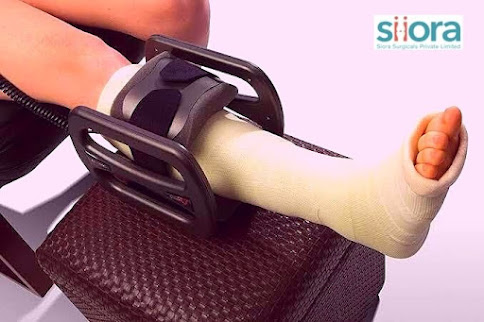Find an experienced Supplier of Orthopaedic Implants to get a high-quality range of external fixators.
What is External Fixation?
External fixation is an orthopedic surgery aimed at repairing severe fractures that cannot be managed with internal fixation. In some cases, external fixation serves as a provisional treatment for the stabilization of the fracture until internal fixation becomes feasible.
Besides correcting the alignment of the fractured bone and allowing it to heal properly, external fixation is also used for limb lengthening and protecting tissues after a serious burn or an injury.
What is the Process of External Fixation?
External fixation is relatively a quick and easy process than internal fixation. This is because surgeons always prefer applying external fixators in emergency situations. This surgery involves the use of orthopedic plates, rods, metal pins, and wires. Besides this, an external frame made of metal rods, clamps, and plates is also used. The surgery is carried out under general anesthesia. Here’s the process of external fixation:
The surgeon will drill holes into the undamaged areas of bones through the skin over them.
Now, special bolts will be screwed into the holes. These screws will help keep the bones in their position.
Now, the surgeon will connect the screws to rods having ball and socket joints from the outside of the body.
Once this is done, the surgeon will adjust the external frame containing the ball and socket joints to make sure that the bones are aligned properly.
What Care is Required for External Fixators?
While applying external fixators, the orthopedic surgeon drills small holes to insert bolts. Now, to prevent infections, it is important to keep those areas clean and dry. Besides this, it is also advised to avoid putting unnecessary weight on the frame.
Another important point that one must consider is while bathing. While taking a shower with an external fixator in place, you must avoid using fragrant soaps and body washes.
Above all, it is also advised to wear loose clothes that fit over the frame easily. Here, you can apply a Velcro fastener at the outer edge of the trouser to wear them easily.
What Are the Advantages of External Fixation?
External fixation has several advantages over internal fixation:
External fixators can be easily and quickly applied
There is a minimal loss of blood in this procedure
External fixators allow easy adjustment of the frame after surgery
One can easily care for surgical wounds after external fixation
The risk of infection at the surgical sites is minimal
If you are looking to participate in an international orthopedic conference, register for the AAOS 2023 Annual Meeting.



Comments
Post a Comment